| Tutorials |
| Tutorials | Description |
 |
Welcome message to users. |
 |
At AcqNotes, we are committed to providing high-quality, informative content in defense acquisitions. As a sponsor, you can align your brand with our mission and engage with a targeted audience of professionals, decision-makers, and enthusiasts in the Aerospace and Defense Acquisition field. |
 |
As a contracting officer for the government, it’s crucial to understand and navigate the complex landscape of procurement regulations. Two key documents play a pivotal role in ensuring transparency and compliance: the Justification and Approval (J&A) for a sole source procurement and the Determination and Findings (D&F) for a normal contract action. |
 |
In the fast-paced world of technological advancement, the successful implementation of cutting-edge solutions relies heavily on accurate assessments of Technology Readiness Levels (TRLs). TRLs serve as a crucial tool for gauging the maturity and feasibility of emerging technologies. However, like any system, the application of TRLs comes with its own set of challenges that can significantly impact the development process. |
 |
In the dynamic world of construction, contractors often find themselves grappling with various contract types, each carrying its unique set of risks and challenges. One such contract that has become increasingly prevalent is the firm-fixed-price contract. While this agreement offers stability and predictability, it is not without its share of potential pitfalls that can significantly impact contractors. |
 |
In the complex landscape of government procurement, protests play a pivotal role in upholding fairness, transparency, and accountability. As businesses engage in competitive bidding for government contracts, disputes and disagreements are inevitable. Protests provide a mechanism for companies to challenge perceived injustices, whether it be solicitation improprieties, evaluation errors, or concerns about the contract award process. |
 |
A Continuing Resolution is essentially a stopgap measure that allows the government to continue funding its operations at the previous fiscal year’s levels when a new budget has not been approved before the start of the new fiscal year. |
 |
In the field of defense acquisitions, where accuracy and dependability are of utmost importance, efficient program management plays a crucial role in achieving success. Government initiatives, particularly those in the defense industry, require meticulous planning, coordination, and implementation to achieve the best possible results. |
 |
A Program Manager (PM) for any DoD program needs to know who the Defense Acquisition Executives (DAE) are that can influence their program. These individuals play a crucial part in shaping the acquisition process, ensuring efficiency, transparency, and effectiveness. |
 |
Two crucial tools often employed to formalize partnerships are the Memorandum of Agreement (MOA) and the Memorandum of Understanding (MOU). Understanding the differences between MOAs and MOUs is vital for orchestrating seamless collaborations and achieving project objectives. |
 |
Other Transaction Authority (OTA) is the term commonly used to refer to the authority of the Department of Defense (DoD) to carry out certain prototypes, research, and production projects. This video details six benefits for using an OTA. |
 |
In the realm of project management, effective communication and clearly defined roles are crucial for success. Two widely used tools to achieve this clarity are the Responsibility Assignment Matrix (RAM) and the Responsible, Accountable, Consulted, and Informed (RACI) Matrix. |
 |
In the intricate world of government procurement, understanding the nuances between a Request for Information (RFI) and a Request for Proposal (RFP) is crucial for businesses aiming to navigate the bureaucratic landscape successfully. |
 |
In government procurements, the emphasis on Total Quality Management (TQM) has become a cornerstone of the decision-making process. TQM is a holistic approach to managing quality throughout an organization, and its significance in government contracts cannot be overstated. |
 |
In the intricate world of government procurement, efficiency and cost-effectiveness are paramount. To achieve these goals, agencies often turn to simplified acquisitions, a procurement method designed for smaller purchases that aim to reduce administrative burden and streamline the acquisition process. At the heart of this approach lies the Request for Quotation (RFQ), a powerful tool. |
 |
Knowing the differences between a Performance Work Statement (PWS) and a Statement of Work (SOW) is essential in the complex world of government procurement. The expectations and results of contractual agreements between the government and contractors are significantly shaped by these two papers. |
 |
The Defense Acquisition University (DAU) and PeopleCert have formed a strategic relationship that lets students get the internationally recognized PRINCE2 Project Management certification, equivalent to the DoD’s Program Management Certification. |
 |
Quality is the cornerstone of any successful business, and as a quality manager at our esteemed company, I am here to shed light on the essential elements of a Quality Management Plan (QMP). |
 |
An Integrated Product Team (IPT) is best when a group of people from different organizations and functional disciplines are needed to work on a project, and their ideas and skills are important to its success. In considering whether an IPT is the best tool for the job, it is important to ask three questions. |
 |
Other Transaction (OT) consortiums are dynamic business structures established by the government to facilitate the execution of Other Transaction Agreements (OTA). Unlike traditional procurement methods bound by rigid regulations and templates, OT consortiums offer a more flexible and adaptable framework. |
 |
Procurement officials frequently use Simplified Acquisition Procedures (SAP) to expedite purchase processes to save time and money. Federal Acquisition Regulation (FAR) Part 13 processes provide three different ways to make purchases: Purchase Orders (PO), Blanket Purchase Agreements (BPAs), and Government-wide Purchase Cards (micro-purchases). |
 |
Offset strategies are contractual requirements imposed by governments on defense contractors, mandating them to invest in domestic industries or provide other forms of economic benefits as a condition of winning defense contracts. These investments can take various forms, including technology transfer, direct investments, joint ventures, or subcontracting agreements. |
 |
A Request for Equitable Adjustment (REA) refers to a formal document submitted by a party, usually a contractor or subcontractor, to seek compensation or modification of the terms of a contract due to unforeseen changes or circumstances that have impacted the performance of the contract. |
 |
Small businesses play a vital role in the defense industry, contributing innovation, agility, and diverse capabilities to support national security objectives. However, breaking into the world of defense contracting can be daunting for small enterprises, with complex regulations, fierce competition, and stringent requirements often acting as barriers to entry. |
 |
Affordability Analysis is a tool that DoD Components use to determine their priorities and what they can and can’t afford on their program(s). |
 |
The Biden-Harris Administration has introduced the Better Contracting Initiative (BCI) as the next phase of its enterprise approach to federal procurement. This four-pronged initiative ensures better terms, prices, and vendor selection when the government purchases goods and services. |
 |
The Small Business Innovation Research (SBIR) program is a highly competitive program that encourages small businesses in the United States to engage in federal research and development (R&D) with the potential for commercialization. |
 |
The Small Business Innovation Research (SBIR) and Small Business Technology Transfer (STTR) programs are competitive funding initiatives administered by various federal agencies in the United States to foster innovation and technology development within small businesses. |
 |
In this video, I will explore three common types of government contracts — (1) fixed-price contracts, (2) cost-reimbursement contracts, and (3) indefinite delivery/indefinite quantity (IDIQ) contracts—and discuss the pros and cons of each. |
 |
In the realm of government contracting and procurement, navigating the various mechanisms available can be a daunting task. Among these mechanisms, two terms often discussed are Commercial Solutions Opening (CSO) and Other Transaction Agreements (OTA). |
 |
The NDAA Section 874 program, at its core, incentivizes ESOP ownership by enabling 100% ESOP-owned contractors to secure sole-source follow-on contracts. This means that companies wholly owned by an ESOP can receive contracts for the continued provision of products or services without undergoing a competitive bidding process. |
 |
Sequestration, often referred to as “the sequester,” is a fiscal policy mechanism enacted by Congress under the 2011 Budget Control Act (BCA). Its primary objective is to enforce budgetary discipline and control government spending by imposing automatic spending cuts. |
 |
The 5 Steps of the Research Process are a list of steps in how to conduct a research project. The steps consist of Locating and Defining Issues or Problems, Designing the Research Project, Collecting Data, Interpreting Research Data, and reporting research Findings. |
 |
Acquisition Categories (ACAT) detail the level and amount of oversight, decision authority, and applicable procedures that are required for a program to operate. An Acquisition category is assigned to a program primarily by the expected program cost and/or level of interest. |
 |
Milestones are a point in time where a recommendation is made to the Milestone Decision Authority (MDA) about starting or continuing an acquisition program into the next Acquisition Phase. |
 |
The DoD calls the system an event-based process where a program goes thru a series of phases, milestones, and reviews from beginning to end. Each milestone is the culmination of a phase where it’s determined if a program will process into the next phase. |
 |
The Acquisition Program Baseline (APB) is an agreement between the Program Manager (PM) and the Milestone Decision Authority (MDA) that documents the program cost, schedule, and performance baselines. |
 |
The Acquisition Strategy is a comprehensive plan that identifies and describes the acquisition approach that Program Management will follow to manage program risks and meet program objectives. The Acquisition Strategy guides program execution across the entire program life cycle and is updated at every major milestone and review. |
 |
The Adaptive Acquisition Framework (AAF) supports the Defense Acquisition System with the objective of delivering effective, suitable, survivable, sustainable, and affordable solutions to the end-user in a timely manner. |
 |
An Analysis of Alternatives (AoA) is an analytical comparison of the operational effectiveness, suitability, and life-cycle cost of alternative material solutions that satisfy an established capability need to be identified in an Initial Capabilities Document (ICD). |
 |
Appropriation Categories are categories of government funding that group funds into areas of interest. |
 |
Award Fee Contracts are a type of Incentive Contract to incentivize the contractor to achieve cost efficiency. These can be a written contract or special incentives. |
 |
A Basic Ordering Agreement (BOA) is a written instrument of understanding negotiated between an agency or contracting activity and a contractor. |
 |
A Blanket Purchase Agreement (BPA) is a simplified method of filling anticipated repetitive needs for supplies or services by establishing “charge accounts” with qualified contractors. BPAs should be established for use by an organization responsible for providing supplies for its own operations or for other offices, installations, projects, or functions. |
 |
A Broad Agency Announcement (BAA) is a notice from the government that requests scientific or research & development (R&D) proposals from private firms concerning certain areas of interest to the government. |
 |
Budgeted Cost of Work Scheduled (BCWS), also called the Planned Value (PV), is the sum of the budget for all work scheduled to be accomplished with a given time period. It also includes the cost of previous work completed and can address a specific period of performance or a date in time. |
 |
A Business Case Analysis (BCA) provides a best-value analysis that considers not only cost but other quantifiable and non-quantifiable factors supporting an investment decision. |
 |
The Capabilities Based Assessment (CBA) is the analysis portion of the Joint Capabilities Integration and Development System (JCIDS) process. |
 |
The Capability Development Document (CDD) specifies the operational requirements for the system that will deliver the capability that meets operational performance criteria specified in the Initial Capabilities Document (ICD). |
 |
The Clinger-Cohen Act of 1996 is designed to improve the way the federal government acquires, uses, and disposes of Information Technology (IT). It encompasses the (1) Information Technology Management Reform Act (ITMRA) and the (2) Federal Acquisition Reform Act (FARA). |
 |
A Commercial off–the-Shelf (COTS) item is one that is sold, leased, or licensed to the general public; offered by a vendor trying to profit from it; supported and evolved by the vendor who retains the Intellectual Property (IP) rights; available in multiple, identical copies; and used without modification of the internals. |
 |
A Commercial Solutions Opening (CSO) is a merit-based source selection strategy for the Department of Defense (DoD) to acquire innovative commercial items, technologies, or services that directly fulfill requirements, close capability gaps, or provide potential technological advances. |
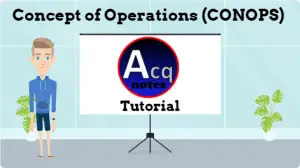 |
A Concept of Operations (CONOPS) is a document that describes a proposed system concept and how that concept would be operated in an intended environment. The CONOPS is developed by the user community to communicate the vision for the operational system to the acquisition and developer community. |
 |
Configuration Management (CM) is the application of sound program practices to establish and maintain consistency of a product’s or system’s attributes with its requirements and evolving technical baseline over its life. |
 |
The Configuration Management Plan (CMP) is a document to inform project stakeholders about Configuration Management (CM) within a project, what CM tools will be used, and how they will be applied by the project. |
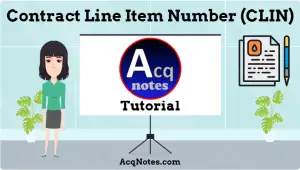 |
Contract Line Item Numbers (CLIN) are part of defense contracts that break the contract down by the commodities being procured (labor hours of services, funding for travel, quantity product A, etc.). |
 |
There are generally two Contracts Types (Fixed Price and Cost Plus) that are used by the DoD along with Ordering Instruments. Contracting in the DoD is developing and managing an agreement between two or more parties following the legal guidelines set forth by the Federal Acquisition Regulations (FAR). |
 |
The Continuous Improvement Process (CIP) is an ongoing effort to improve products, services, or processes. It’s a six-step systematic approach to plan, sequence, and implement improvement efforts using data and elaborates on the Shewhart Cycle (Plan, Do, Study Act). The CIP provides a common language and methodology which enables understanding the improvement process. |
 |
A Corrective Action Request (CAR) is a type of change request that documents a problem with a product or process and requests the root cause of a nonconformity be removed. |
 |
Cost estimating is a valuable tool that is used in each of the acquisition phases. There are a number of cost estimating techniques that can be used in estimating the costs of a future and current weapon system. |
 |
A Cooperative Research and Development Agreement (CRADA) is a written agreement between a private company and a government agency to work together on a project. |
 |
Cost-Reimbursement types of contracts provide for payment of allowable incurred costs, to the extent prescribed in the contract. These contracts establish an estimate of the total cost for the purpose of obligating funds and establishing a ceiling that the contractor may not exceed (except at its own risk) without the approval of the contracting officer. |
 |
Cost Variance (CV) indicates how much over or under budget the project is. It is used to track expense line items, but can also be tracked at the project level, as long as there is a budget allocated to the item. |
 |
Data Rights refer to the Government’s nonexclusive license rights in two categories of valuable intellectual property, “technical data” and “computer software” delivered by contractors under civilian agency and DoD contracts. |
 |
The Department of Defense (DD) Form 254 “Contract Security Classification Specification” provides a contractor (or a subcontractor) the security requirements, classification guidance, and handling procedures for classified material received and/or generated on a classified contract. |
 |
Developmental Test & Evaluation (DT&E) is conducted throughout the acquisition process to assist in engineering design and development and to verify that technical performance specifications have been met. |
 |
An Engineering Change Proposal (ECP) is a management tool used to propose a configuration change to a Configuration Item (CI) and its government-baselined performance requirements and configuration documentation during an acquisition program. |
 |
The Engineering & Manufacturing Development (EMD) Phase is where a system is developed and designed before going into production. The EMD Phase starts after a successful Milestone B which is considered the formal start of any program. |
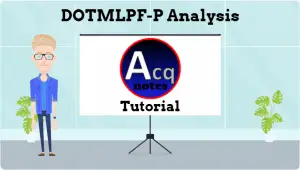 |
Doctrine, Organization, Training, Materiel, Leadership and Education, Personnel, Facilities and Policy (DOTMLPF-P) analysis is the first step in the Functional Solutions Analysis (FSA). It determines/recommends if a non-material approach or a material approach is required to fill a capability gap identified in the Functional Needs Analysis (FNA). |
 |
A Firm-Fixed-Price (FFP) contract provides for a price that is not subject to any adjustment on the basis of the contractor’s cost experience in performing the contract. This contract type places upon the contractor maximum risk and full responsibility for all costs and resulting profit or loss. |
 |
A Forward Pricing Rate Agreement (FPRA) is an agreement between a contractor and a government agency in which certain indirect rates are established for a specified period of time. |
 |
Government Furnished Equipment (GFE) (FAR Part 45) is equipment that is owned by the government and delivered to or made available to a contractor. GFE is normally specified in a Request for Proposal (RFP) or contract. The determination of GFE is usually made by the government Program Manager (PM) and Contracting Officer. |
 |
An Incentive Contract is appropriate when a Firm-Fixed-Price (FFP) contract is not appropriate and the required supplies or services can be acquired at lower costs and relating the amount of profit or fee payable under the contract to the contractor’s performance. |
 |
The Incremental Funding Policy states that partial funding of a contract is allowed with additional funds anticipated to be provided at a later time and the amount budgeted shall be limited to the budget authority needed to cover all costs expected to be incurred during a (12) month period. |
 |
The Initial Capabilities Document (ICD) documents the need for a materiel approach or an approach that is a combination of materiel and non-materiel, to a specific capability gap. |
 |
The Integrated Master Plan (IMP) is an event-based, top-level plan consisting of a hierarchy of Program Events. Each event is decomposed into specific accomplishments and each specific accomplishment is decomposed into specific Criteria. |
 |
The Integrated Master Schedule (IMS) is a time-based schedule containing the networked, detailed tasks necessary to ensure successful program/contract execution. |
 |
An Integrated Product Team (IPT) is a team composed of representatives from appropriate functional disciplines working together to build successful programs, identify and resolve issues, and make sound and timely recommendations to facilitate decision-making. |
 |
Key Performance Parameters (KPP) are key system capabilities that must be met for a system to meet its operational goals. The Capability Development Document (CDD) and Capability Production Document (CPD) identify the KPP(s) that contribute to the desired operational capability in a threshold and objective format. |
 |
Manufacturing Readiness Levels (MRLs) are used with assessments and are designed to assess the maturity of a given technology, system, subsystem, or component from a manufacturing perspective. |
 |
Market Research is conducted to determine the availability of commercial products and services and to identify and evaluate market practices. |
 |
The Materiel Solution Analysis (MSA) Phase assesses potential solutions for a needed capability in an Initial Capabilities Document (ICD) and satisfies the phase-specific Entrance Criteria for the next program milestone designated by the Milestone Decision Authority (MDA). |
 |
Measures of Effectiveness (MOE) are measures designed to correspond to the accomplishment of mission objectives and the achievement of desired results. They quantify the results to be obtained by a system and may be expressed as probabilities that the system will perform as required. |
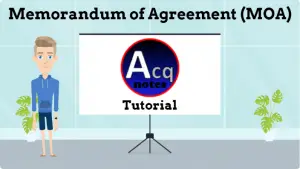 |
A Memorandum of Agreement (MOA) is a written document describing a cooperative relationship between two parties wishing to work together on a project or to meet an agreed-upon objective. An MOA serves as a legal document and describes the terms and details of the partnership agreement. |
 |
The Middle Tier of Acquisition (MTA) pathway is used to rapidly develop fieldable prototypes within an acquisition program to demonstrate new capabilities and/or rapidly field production quantities of systems with proven technologies that require minimal development. |
 |
Milestone B is a Milestone Decision Authority (MDA) led review at the end of the Technology Maturation & Risk Reduction (TD) Phase in the Defense Acquisition Process. Its purpose is to make a recommendation or seek approval to enter the Engineering and Manufacturing Development (EMD) Phase. Milestone B is considered the official start of a program. A milestone marks the start/or finish of a phase and has defined Entrance and Exit Criteria. |
 |
Operational Test and Evaluation (OT&E) is a fielded test, under realistic combat conditions, for a Major Defense Program (MDP) of any item or component of a weapons system, equipment, or munitions for the purposes of determining its operational effectiveness and operational suitability for combat. |
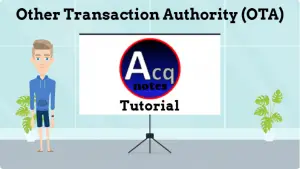 |
Other Transaction Authority (OTA) is the term commonly used to refer to the authority of the Department of Defense (DoD) to carry out certain prototypes, research, and production projects. Other Transaction (OT) authorities were created to give DoD the flexibility necessary to adopt and incorporate business practices that reflect commercial industry standards and best practices into its award instruments. |
 |
Performance-Based Acquisition (PBA) is a method of preparing service contracts that emphasizes the service outcomes the Government would like the contractor to provide |
 |
A Partnership Intermediary Agreement (PIA) is a contract, agreement, or memorandum of understanding with a non-profit partnership intermediary to bring together academia and industry on behalf of the government to speed up tech transfer and licensing. |
 |
A Performance Work Statement (PWS) is a Statement of Work for performance based-acquisitions that describes the required results in clear, specific, and objective terms with measurable outcomes. When a contract is awarded, the PWS is legally binding between the contractor and the U.S. Government. |
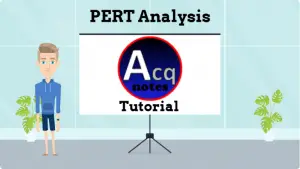 |
The Program Evaluation and Review Technique (PERT) is a method used to examine the tasks in a schedule and determine a Critical Path Method variation (CPM). It analyzes the time required to complete each task and its associated dependencies to determine the minimum time to complete a project. |
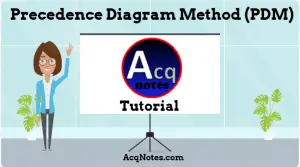 |
Precedence Diagram Method (PDM) is a visual representation technique that depicts the activities involved in a project. It is a method of constructing a project schedule network diagram that uses boxes/nodes to represent activities and connects them with arrows that show the dependencies. |
 |
The Preliminary Design Review (PDR) is a technical assessment that establishes the Allocated Baseline of a system to ensure a system is operationally effective. A PDR is conducted before the start of detailed design work and is the first opportunity for the Government to closely observe the Contractor’s hardware and software design. |
 |
The Production Readiness Review (PRR) assesses a program to determine if the design is ready for production. |
 |
A Program Objective Memorandum (POM) is a recommendation from the Services and Defense Agencies to the Office of the Secretary of Defense (OSD) concerning how they plan to allocate resources (funding) for a program(s) to meet the Service Program Guidance (SPG) and Defense Planning Guidance (DPG). |
 |
The Program Protection Plan (PPP) is the single source document used to coordinate and integrate all protection efforts. |
 |
A Proposal Compliance Matrix is a cross-reference table that tells proposal evaluators where they can find responses to specific Request for Proposal (RFP) requirements. It helps ensure proposal managers that the proposal responds to and complies with all the Proposal requirements. |
 |
A Proposal Development Process helps organizations respond to buyer Request for Proposals (RFP). Having an established proposal development process should help ensure organizations develop the best proposal possible that satisfies all the buyer’s needs and requirements. |
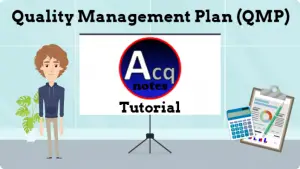 |
A Quality Management Plan (QMP) helps guide the Program Manager (PM) and project personnel to execute quality management and quality assurance activities for a project or program. The QMP is normally developed by a contractor and reviewed by the customer. Quality is the degree to which the project fulfills requirements. |
 |
A Request for Information (RFI) is a standard business process whose purpose is to collect written information about the capabilities of various suppliers. It is often used in market research as a solicitation sent to a broad base of potential suppliers for the purpose of conditioning suppliers’ minds, developing strategy, building a database, for an upcoming contract competition. |
 |
A Request for Proposal (RFP) is a solicitation used in negotiated acquisition to communicate government requirements to the prospective contractors and to solicit proposals. At a minimum, solicitations shall describe the Government’s requirement, anticipated terms, and conditions that will apply to the contract. |
 |
Requirements Development fits into Step One of the Systems Engineering Process: Requirements Analysis. There are six (6) basic requirements development steps and really don’t change depending on which model is used. All models are similar in their approach; they just depict them differently graphically. |
 |
There are a number of requirement types that system engineers will have to develop on an acquisition program through its life cycle. These requirements range from very high-level concept-focused to very specific for a part. The main types of requirements are Functional Requirements, Performance Requirements, System Technical Requirements, and Specifications. |
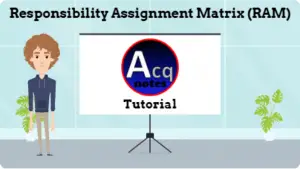 |
A Responsibility Assignment Matrix (RAM) describes the participation of various organizations, people, and their roles in completing tasks or deliverables for a project. It’s used by the Program Manager (PM) in clarifying roles and responsibilities in a cross-functional team, projects, and processes. A Request for Proposal (RFP) might request a RAM from a contractor. |
 |
The NIST Risk Management Framework (RMF) describes the process for identifying, implementing, assessing, and managing cybersecurity capabilities and services, expressed as security controls, and authorizing the operation of Information Systems (IS) and Platform Information Technology (PIT) systems. |
 |
A Risk Management Plan (RMP) is prepared by a project manager to address risks, their potential impact on a program and consists of ways to reduce these risks. The RMP tells the government and contractor team how they plan on reducing risks to a certain level by a certain time. |
 |
Schedule Variance (SV) indicates how much a project is ahead or behind schedule. It measures whether a project is on track by calculating actual progress against expected progress. SV is used by the Program Manager (PM) and program personnel to determine how best to utilize their remaining resources. |
 |
Simplified Acquisition Procedures (SAP) are designed for the purchase of relatively simple supply or service requirements. It is a contracting method that seeks to reduce the amount of work the government must undertake to evaluate an offer. |
 |
A Small Disadvantaged Business (SDB) is a small business that is at least 51 percent owned by one or more individuals who are both socially and economically disadvantaged. SDB status makes a company eligible for bidding and contracting benefit programs involved with federal procurement. |
 |
The Software Development Plan (SDP) describes a developer’s plans for conducting a software development effort. The SDP provides the acquirer insight and a tool for monitoring the processes to be followed for software development. It also details methods to be used and the approach to be followed for each activity, organization, and resource. |
 |
The Software Development Process is the structured approach to developing software for a system or project. |
 |
A sole source procurement is when the government enters into a contract with a contractor without going through the typical competitive process as required by law because it deems that the contractor is the only source available that can meet the government requirements. |
 |
The Source Selection Plan (SSP) is a key document that specifies how the source selection activities will be organized, initiated, and conducted. It serves as the guide for conducting the evaluation and analysis of proposals and the selection of source(s) for the acquisition. SSP must clearly and succinctly express the Government’s minimum needs (evaluation factors) and their relative order of importance. |
 |
A Sources Sought Notice is a government market research tool to determine if there are two (2) or more capable businesses or Small Businesses that can perform the requirements of a planned contract. |
 |
The Statement of Objectives (SOO) identifies the broad, basic, top-level objectives of an acquisition/procurement and is used as a focusing tool for both the Government and offeror’s. |
 |
The Statement of Work (SOW) is a document that enables the offeror to clearly understand the government’s needs for the work to be done in developing or producing the goods or services to be delivered by a contractor. It defines (either directly or by reference to other documents) all work (non-specification) performance requirements for a contractor. |
 |
A Systems Engineering Management Plan (SEMP) is a document that addresses a contractor’s overall systems engineering management approach. It provides unique insight into the application of a contractor’s standards, capability models, configuration management, and toolsets to their organization. |
 |
The Systems Engineering Plan (SEP) is a living document that details the execution, management, and control of the technical aspects of an acquisition program from conception to disposal. The SEP outlines how the systems engineering process is applied and tailored to meet objectives for each acquisition phase. |
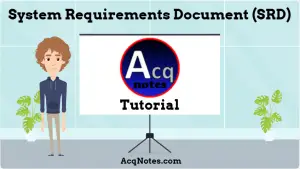 |
The System Requirement Document (SRD) defines system-level functional and performance requirements for a system. |
 |
A System Requirements Review (SRR) is a formal review conducted to ensure that system requirements have been completely and properly identified and that a mutual understanding between the government and contractor exists. |
 |
A Trade Study is a study that identifies a preferred solution among a list of qualified solutions. The trade study will examine these solutions against criteria such as; cost, schedule, performance, weight, system configuration, complexity, the use of Commercial Off-the-shelf (COTS), and many others. |
 |
A Technical Data Package (TDP) includes the technical design and manufacturing information needed to enable the construction or manufacture of an item component modification or to enable the performance of certain maintenance or production processes. |
 |
The Technology Maturation & Risk Reduction (TMRR) Phase is one of five phases that make up the defense acquisition process. It’s focused on making sure a program is ready to enter into the Engineering & Manufacturing Development (EMD) Phase by having reduced risk, mature requirements, funding, and stable programmatics. |
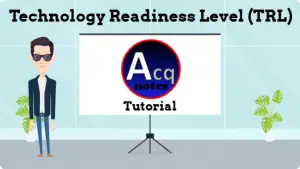 |
Technology Readiness Levels (TRL) are a method of estimating the technology maturity of Critical Technology Elements (CTE) of a program during the acquisition process. They are determined during a Technology Readiness Assessment (TRA) that examines program concepts, technology requirements, and demonstrated technology capabilities. |
 |
The Test and Evaluation Master Plan (TEMP) describes an acquisition program’s planned Test and Evaluation (T&E) activities over a program’s life-cycle and identifies evaluation criteria for the testers. |
 |
A Test Readiness Review (TRR) is conducted to determine if the system under review is ready to proceed into formal testing by deciding whether the test procedures are complete and verifying their compliance with test plans and descriptions. |
 |
Time & Materials (T&M) contracts are used when you can not estimate the size of the project or any of the changes that can occur while in development. This is the opposite of a Fixed-Price Contract. |
 |
The To Complete Performance Index (TCPI) is a comparative Earn Value Management (EVM) metric used primarily to determine if an independent estimate at completion is reasonable. It computes the future required cost efficiency needed to achieve a target Estimate at Completion (EAC). |
 |
Undefinitized Contract Actions (UCA) are those contract actions for which the contract terms, specifications, or price are not agreed upon before performance commences. |
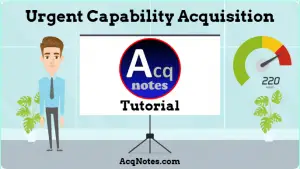 |
An Urgent Capability Acquisition is a pathway in the Adaptive Acquisition Framework reserved for capabilities required to be delivered As Soon As Possible due to their urgent need. These urgent needs are usually meant to save lives or ascertain mission accomplishment. |
 |
Verification and Validation (V&V) are steps to determine if a system or component satisfies its operational and system-level requirements. |
 |
The Verification Process confirms that Design Synthesis has resulted in a physical architecture that satisfies the system requirements. Throughout a system’s life cycle, design solutions at all levels of the physical architecture are verified to meet specifications. |
 |
A Work Breakdown Structure (WBS) is a tool used to define a project in discrete work elements in a Hierarchical format. It displays and defines the product, or products, to be developed and/or produced. It relates the elements of work to be accomplished to each other and to the end product. In other words, the WBS is an organized method to break down a product into subproducts at lower levels of detail. It’s used for planning, cost estimating, execution and control. |
| Outdated Tutorials / Poor Quality | |
| |
An Overview of the Defense Acquisition System. |
| |
An Overview of the Joint Capabilities Integration and Development System (JCIDS) |
| An Overview of DoD Instruction 5000.02 “Operations of the Defense Acquisition System” | |
| An Overview of Contract Data Requirements List (CDRL) | |
| |
Program Objective Memorandum (POM) |
| Critical Design Review (CDR) | |
